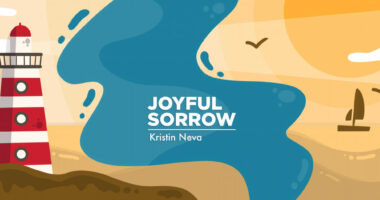A Sign of the Times — Could They Be a-Changin’?

“All the Bush League batters
Are left to die on the diamond
In the stands the home crowd scatters
For the turnstiles.”
Twice in my post-ALS life, Neil Young’s song “For the Turnstiles” has struck me smack dab in the center of my forehead.
As the dust finally settled following my ALS diagnosis, the reality that the disease had begun its assault much earlier prompted a retrospective mental journey. I began recounting the many clues that “something” was seriously off-kilter. In hindsight, a defining incident had played out in like manner to Young’s song.
In 2006, I was in attendance for the final game of the Durham Bulls’ minor league — colloquially, the “bush league” — baseball season. Some of the players’ aspirations to one day make the major leagues would die that day. As I casually ambled out of the ballpark, my foot drop caused me to stumble, lose my balance, and crash to the concrete. My arm reflexes were too slow to break my fall. I was within yards of the turnstiles.
In response to my column describing the fragmented nature of ALS advocacy, a reader suggested I peruse Dr. Merit Cudkowicz’s remarks to the U.S. House Energy and Commerce Subcommittee on Health as lawmakers considered the Accelerating Access to Critical Therapies (ACT) for ALS Act. The reader’s assessment was that Cudkowicz’s testimony sought to advance a similar viewpoint to the one espoused in my column. Indeed she did, only with much more erudition, clarity, and eloquence.
I was immediately struck by this statement: “In the United States, every 90 minutes someone is diagnosed with ALS, and someone dies from ALS. We refer to that as the ‘ALS Turnstile of Death.'” Ouch. While the fact wasn’t new to me, I hadn’t heard that characterization before. Suddenly, Young’s lyrics packed a symmetrical personal double whammy.
Beyond that personally compelling tidbit, Cudkowicz offered observations about the plight of ALS sufferers, the promise of current research, and suggestions on expediting treatments — all of which she is imminently qualified to do.
Since 1994, her numerous skills and estimable intellect have targeted ALS abatement. Currently, she is the Julieanne Dorn Professor of Neurology at Harvard Medical School, chief of neurology at Massachusetts General Hospital (MGH), co-director of MGH’s Neuromuscular Division, and director of the MGH’s Sean M. Healey and AMG Center for ALS.
She founded and serves as director of the Neurological Clinical Research Institute. Cudkowicz also co-founded the Northeast ALS Consortium (NEALS) and is a former co-director of NEALS’ clinical trial network.
She is clearly an all-star on the ALS team, and her comments on Capitol Hill were equally stellar. Her goal was to unite Congress, the U.S. Food and Drug Administration (FDA), and the National Institutes of Health (NIH) on the “ALS team.” Subordinate to that objective was the quest for increased funding for science, clinical trials, expanded access, and new policies and processes to accelerate the regulatory approval of treatments for ALS.
She began with an empathetic description of the gruesome reality of the ALS math. Hence, the turnstile reference. She offered a scientific prediction, which was new to me. The worldwide ALS-induced misery will only worsen, as the global incidence of the disease is “expected to rise more than 40% in the next decade or two.”
Cudkowicz touched on the challenge of properly interpreting the results of the AMX0035 (CENTAUR), NurOWN, and Tofersen (SOD1 gene therapy) trials. All three failed to meet their respective primary goals, yet each demonstrated beneficial use for a subset of the enrollees. If not for persistent outcry, these therapies of promise may have died on the regulatory vine.
To forestall future blinder-caused drug rejections, Cudkowicz argued a partnership between the scientific community, the FDA, and the NIH was necessary. Specifically, the challenge of identifying accurate “biomarkers of disease activity and progression, therapeutic target engagement and treatment response” could be addressed. Likewise, conventional approaches to clinical trial design could be overhauled, yielding a method far more sensitive to clinical changes, while in step with mission urgency.
Cudkowicz used the HEALEY ALS Platform Trial as an example of streamlined design. The trial commenced with three therapies in August 2020, then a fourth was added in unprecedented time. A fifth treatment was recently cleared in September. A new testing model is especially critical “as science is evolving and the drug pipeline is becoming much more targeted to subpopulations of the disease.”
Cudkowicz, almost anecdotally, mentioned that now “there are thousands of scientists in the field, brilliant new insights into the underlying disease biology, more than 160 companies with ALS drugs in pipeline, [and] several treatments with positive phase 2 and 3 trial results in people already.”
Given that arsenal and last week’s successful passage of the ACT for ALS Act out of subcommittee, could relief be near?
Fittingly, Neil Young’s song is on the album “Comes a Time.” The time has come for the “jaws of life” to rescue us from the “ALS turnstile.”
***
Note: ALS News Today is strictly a news and information website about the disease. It does not provide medical advice, diagnosis, or treatment. This content is not intended to be a substitute for professional medical advice, diagnosis, or treatment. Always seek the advice of your physician or other qualified health provider with any questions you may have regarding a medical condition. Never disregard professional medical advice or delay in seeking it because of something you have read on this website. The opinions expressed in this column are not those of ALS News Today or its parent company, Bionews, and are intended to spark discussion about issues pertaining to ALS.








Wayne
Amen Rick. Love your references to music in all your articles. Am a big music fan (all kinds of music). My oldest son is a musician and his younger brother who is now 24 years old was diagnosed with ALS in March of this year. I pray for all out there dealing with this brutal disease that relief is VERY near. Thank you for your wonderful articles.
Tom Hehir
Rick,
Thanks for this article and the recognition of Dr. Cudkowicz. Fortunately, she is my doctor. I addition to her accomplishments, she is one of the finest people I've come across. We are so fortunate to have her in our corner.
Tom Hehir
Gwen McMartin
Thank you for the great informative article. I am a 71 year old grandma, artist lover of nature. I was diagnosed just last month after many months of tests, blood work, doctors visits etc. My life is now turned upside down as I now realize I will be gradually getting worse. I have a great neurologist, specializing in ALS along with supportive staff at Providence, Portland OR. Thankfully there is a lot of support in the ALS community along with my wonderful friend who is helping me at home and my family. Hopefully there is a treatment on the horizon for turning this around.
Mark A
Good article Rick.
I was diagnosed in May of 2020, 69yrs old. After having weakness in my left arm I went to the GP to check it out. Having worked in aged care I had seen quite a few victims of stroke where their left arm was affected. The GP sent me off for all kinds of scans and tests. Finally sent to a neurologist where hooked up to electrodes shocking my muscles over a couple weeks time showed it to be MND/ALS.
Wondering about early signs I was reminded by a Facebook memory popped up from January, 2020 where I posted "In the '60s I was tripping, now I'm in my 60s and I'm tripping again".
Your story reminded me of that.
Mark
Sydney, Australia
Jaime Lafita
Thanks for your words of hope, Rick. And for the such a wise reference to Neil Young's song. Let me share our mutual love to his music by saying that the song is in his "On The Beach" album. On the same beach where we face an ocean of hope.